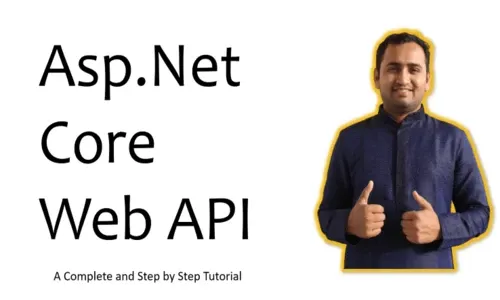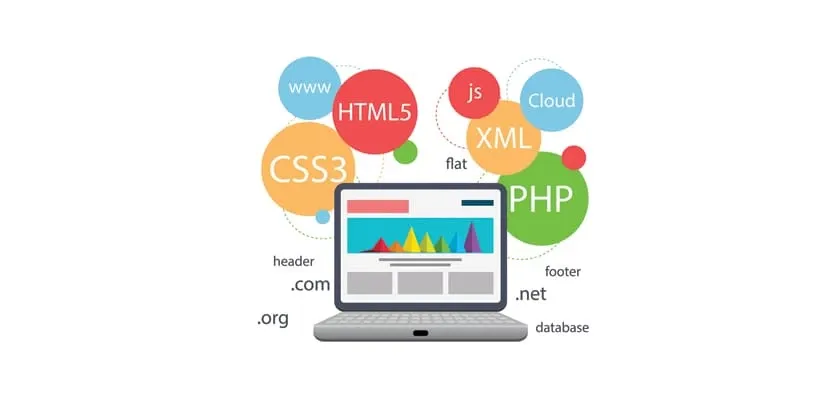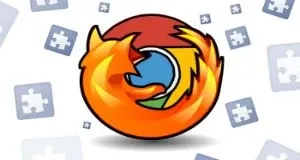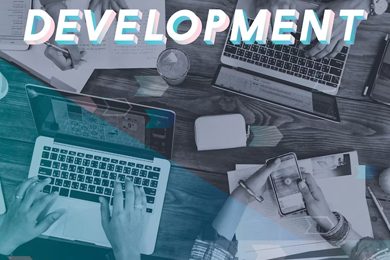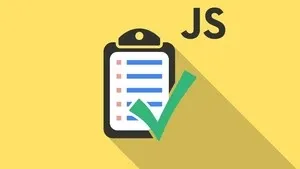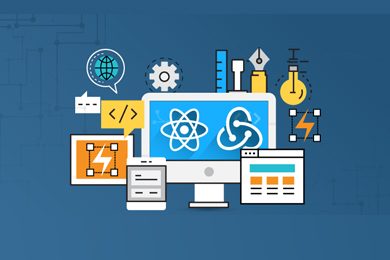This plan includes
- Limited free courses access
- Play & Pause Course Videos
- Video Recorded Lectures
- Learn on Mobile/PC/Tablet
- Quizzes and Real Projects
- Lifetime Course Certificate
- Email & Chat Support
What you'll learn?
- Fundamentals of ASP NET Core Web API
- Build RESTful API's in ASP NET Core 5.0
- Real world Book Store API application
- Host builder and Web host builder
- Middleware
- Dependency Injection: Different ways to inject and resolve the dependency
- Routing
- Format the response of your API
- Get, Post, Put, Patch, Delete API development
- Consume the APIs in Angular application
- Login & Signup using Entity framework Core, Identity Core & JWT
- And lots of other concepts...
Course Overview
ASP.NET Core Web API is the latest and most powerful framework for the development of RESTful Web API. This Asp.Net Core Web API is open source and supported by Microsoft.
RESTful Web APIs are the most essentials part of any modern world application. These RESTful Web APIs help us to extend our application on multiple platforms like Web app, Android app, iOS app, etc.
Learning Journey
We will start our learning from the fundamentals of Web API like
-
What is Web API?
-
Why do we need Web API for our application?
-
What is the best framework for Web API development?
-
How to set up the development Machine?
-
Develop Web API in Real-world Book Store application
-
Consume the APIs in Angular Application.
-
How to work with Entity Framework Core 5.0 Code first approach?
-
How to create Login and Signup tables automatically using Identity Core?
-
And lots of other concepts.
What type of APIs we will develop
We will develop the following types of APIs
-
HTTP GET: Get single and multiple resources from the database
-
HTTP POST: Add a new resource (book) to the database
-
HTTP PUT: 2 ways to update all columns of a resource in the database
-
HTTP PATCH: Update only a few columns of a resource (Excellent explanation)
-
HTTP DELETE: Delete a resource from the database
Tools and technologies used in this RESTful Web APIs using Asp.Net Core 5.0
We will use all the latest tools and technologies for the development of RESTful Web APIs using Asp.Net Core.
-
Asp.Net Core 5.0
-
Entity Framework Core 5.0
-
Identity Core 5.0
-
SQL Server
-
JWT
-
C#
-
JSON format output
-
Postman (Web API testing client tool)
-
Visual Studio 2019
-
Visual Studio Code
-
SQL Server Management Studio
-
A couple of other packages that are required to develop reliable and robust Web APIs
Pre-requisites
- No prior knowledge of Dot Net Core is required.
- Basic knowledge of C# like classes, methods, interface, etc.
- Basic knowledge of database like table, columns, datatypes etc.
Target Audience
- Anyone who wants to learn everything about the RESTful Web APIs using AspNet Core 5.0
- .Net Developers who want to learn RESTful Web APIs using AspNet Core 5.0
Curriculum 106 Lectures 07:02:10
Section 1 : Introduction
Section 2 : Why do Modern application needs Web API
- Lecture 1 :
- The Problem: What is need of Web API
- Lecture 2 :
- The Solution: The need of Web API
- Lecture 3 :
- What is Web API and which framework should we use for the development
- Lecture 4 :
- What is REST and RESTful Web APIs
Section 3 : Fundamentals of HTTP, HTTP Verbs and all status codes
- Lecture 1 :
- What is HTTP and why we need to know about HTTP?
- Lecture 2 :
- HTTP Request and HTTP Response with its components
- Lecture 3 :
- HTTP Verbs or HTTP methods
- Lecture 4 :
- Status Code and their categories
- Lecture 5 :
- Frequently used Status Codes in Web API
- Lecture 6 :
- Demo: HTTP Request and HTTP Response
Section 4 : System setup
- Lecture 1 :
- List of all software required for Web API development
- Lecture 2 :
- Install the Dot Net Core framework and verify the installation
- Lecture 3 :
- Install the Visual Studio 2019 and Visual Studio Code (The Code Editor)
- Lecture 4 :
- Install the SQL Server
- Lecture 5 :
- Install SQL Server Management Studio (SSMS)
- Lecture 6 :
- Install Postman (Required to test the APIs)
Section 5 : Introduction to Asp.Net Core Web API Project
- Lecture 1 :
- Create your first Asp.Net Core Web API project using CLI- Command line interface
- Lecture 2 :
- Open the project files in Visual Studio Code
- Lecture 3 :
- Build the Asp.Net Core project using CLI
- Lecture 4 :
- Run the Asp.Net Core Web API project using CLI
- Lecture 5 :
- Test the default APIs using Swagger, Browser and Postman
- Lecture 6 :
- Create, Build and Run the Web API Core project using Visual Studio 2019
Section 6 : Explanation of Asp.Net Core Web API Project files
- Lecture 1 :
- Asp.Net Core Web API Project files
- Lecture 2 :
- launchSettings.json file in Asp.Net Core Web API
- Lecture 3 :
- csproj (Project file) in Asp.Net Core Web API
Section 7 : Convert a console application to asp.net core web application
- Lecture 1 :
- Create a Dot Net Core Console application using Visual Studio
- Lecture 2 :
- Update the csproj file
- Lecture 3 :
- Add a Default Host Builder
- Lecture 4 :
- Add a Default Web Host Builder
- Lecture 5 :
- Setup the Startup class (Configure and ConfigureServices method)
- Lecture 6 :
- Setup the default route to access a resource
- Lecture 7 :
- Inject Web API services using AddControllers method
- Lecture 8 :
- Add a new controller in the application
Section 8 : Middleware and HTTP Request Pipeline
- Lecture 1 :
- Verify the Next() method in built-in middleware: Dig Asp.Net Core GitHub Repo
- Lecture 2 :
- Create Custom Middleware in a separate file
- Lecture 3 :
- Demo: Map() method in middleware
- Lecture 4 :
- Demo: Use() & Next() method in Middleware
- Lecture 5 :
- Demo: Run() method in Middleware
- Lecture 6 :
- Working with Run(), Map(), Use() and Next() method
- Lecture 7 :
- What is Middleware and HTTP Request Pipeline
Section 9 : Routing in Asp.Net Core Web API
- Lecture 1 :
- Best practices of RESTful URLs for CRUD operations
- Lecture 2 :
- Route Constraints: Alpha & Regular Expression (regex)
- Lecture 3 :
- Route Constraints: Validate the route variables
- Lecture 4 :
- Set the Base Route at the Controller level
- Lecture 5 :
- Token replacement in Routing
- Lecture 6 :
- Same URL for multiple resource (Is this Possible?)
- Lecture 7 :
- Setup multiple URLs for single resource (Action Method)
- Lecture 8 :
- Working with Query String in Routing
- Lecture 9 :
- Working with Variables in Routing
- Lecture 10 :
- Set first Route on Controller's Action method
- Lecture 11 :
- How to enable routing in asp.net core web application
- Lecture 12 :
- What is Routing in Asp.Net Core Web API
Section 10 : Return types of Controller's action method in asp.net core
- Lecture 1 :
- ActionResult
- Lecture 2 :
- IActionResult
- Lecture 3 :
- Specific type
Section 11 : Return different types of status code in response
- Lecture 1 :
- Remaining built-in methods
- Lecture 2 :
- Return 404 status code
- Lecture 3 :
- Return 301, 302 status code
- Lecture 4 :
- Return 201 status code
- Lecture 5 :
- Return 400 status code
- Lecture 6 :
- Return 202 status code
- Lecture 7 :
- Return 200 status code
Section 12 : Model Binder - The process of binding the request data to the dot net types
- Lecture 1 :
- Custom Model Binder in Asp.Net Core Web API (Example -2)
- Lecture 2 :
- Custom Model Binder in Asp.Net Core Web API (Example -1)
- Lecture 3 :
- [FromHeader] attribute: Bind the header data
- Lecture 4 :
- [FromForm] attribute: Bind the from-data
- Lecture 5 :
- [FromBody] attribute: Bind the body data
- Lecture 6 :
- [FromRoute] attribute: Bind the route data
- Lecture 7 :
- [FromQuery] attribute: Bind the query string data
- Lecture 8 :
- Model binder's default way to bind the incoming request data with parameters
- Lecture 9 :
- [BindProperties] attribute
- Lecture 10 :
- [BindProperty] attribute: Bind Incoming form-data to public properties
- Lecture 11 :
- What is Model Binder?
Section 13 : Dependency Injection
- Lecture 1 :
- What is Dependency Injection (DI)
- Lecture 2 :
- Working with Services without using Dependency Injection
- Lecture 3 :
- Singleton service lifetime using AddSingleton<> method
- Lecture 4 :
- Scoped service lifetime using AddScoped<> method
- Lecture 5 :
- Transient service lifetime using AddTransient<> method
- Lecture 6 :
- TryAddSingleton, TryAddScoped and TryAddTransient methods in DI
- Lecture 7 :
- Resolve the service dependency in action method directly
Section 14 : Real world asp.net core web api application development
- Lecture 1 :
- Start the development of Real world Asp.Net Core Web API application
Section 15 : Installation and Setup the EF Core
- Lecture 1 :
- Introduction to Entity Framework Core
- Lecture 2 :
- Install Entity Framework Core in Asp.Net Core Web API application
- Lecture 3 :
- Setup the DbContext Class and Database Connection String
- Lecture 4 :
- Read connection string from appsettings.json file
- Lecture 5 :
- Generate SQL Server database using Entity Framework Core migrations
Section 16 : RESTFul Web API development
- Lecture 1 :
- HTTPGET: Create API to get all items from database
- Lecture 2 :
- HTTPGET: Create API to get one item from database
- Lecture 3 :
- HTTPPOST: Create API to add new item in the database
- Lecture 4 :
- HTTPPUT: Create API to update the item in the database
- Lecture 5 :
- HTTPPUT: Update item in one database call
- Lecture 6 :
- HTTPPATCH: Create API to partially update an item
- Lecture 7 :
- HTTPDELETE: Create API to delete item from database
- Lecture 8 :
- Implement Model validations in Web APIs
- Lecture 9 :
- Working with Automapper
Section 17 : Consume the Web API in Angular application
- Lecture 1 :
- Setup the Angular application and install bootstrap
- Lecture 2 :
- Consume GetAllBooks API in the Angular application and face the CORS issue
- Lecture 3 :
- Fix CORS issue in Asp.Net Core Web API and display the books data in Angular app
- Lecture 4 :
- Consume Add new Book POST API in Angular application
Section 18 : Login and Signup with JWT Token and Identity Core
- Lecture 1 :
- Install Identity Core and generate the tables automatically
- Lecture 2 :
- Create Controller and Repository for Login and Signup
- Lecture 3 :
- Signup (Register) in Asp.Net Core API
- Lecture 4 :
- Authorize attribute
- Lecture 5 :
- Install package for JWT and configure in Asp.Net Core
- Lecture 6 :
- Login API with JWT token
Section 19 : End of Course
- Lecture 1 :
- Course last video
Our learners work at
Frequently Asked Questions
How do i access the course after purchase?
It's simple. When you sign up, you'll immediately have unlimited viewing of thousands of expert courses, paths to guide your learning, tools to measure your skills and hands-on resources like exercise files. There’s no limit on what you can learn and you can cancel at any time.Are these video based online self-learning courses?
Yes. All of the courses comes with online video based lectures created by certified instructors. Instructors have crafted these courses with a blend of high quality interactive videos, lectures, quizzes & real world projects to give you an indepth knowledge about the topic.Can i play & pause the course as per my convenience?
Yes absolutely & thats one of the advantage of self-paced courses. You can anytime pause or resume the course & come back & forth from one lecture to another lecture, play the videos mulitple times & so on.How do i contact the instructor for any doubts or questions?
Most of these courses have general questions & answers already covered within the course lectures. However, if you need any further help from the instructor, you can use the inbuilt Chat with Instructor option to send a message to an instructor & they will reply you within 24 hours. You can ask as many questions as you want.Do i need a pc to access the course or can i do it on mobile & tablet as well?
Brilliant question? Isn't it? You can access the courses on any device like PC, Mobile, Tablet & even on a smart tv. For mobile & a tablet you can download the Learnfly android or an iOS app. If mobile app is not available in your country, you can access the course directly by visting our website, its fully mobile friendly.Do i get any certificate for the courses?
Yes. Once you complete any course on our platform along with provided assessments by the instructor, you will be eligble to get certificate of course completion.
For how long can i access my course on the platform?
You require an active subscription to access courses on our platform. If your subscription is active, you can access any course on our platform with no restrictions.Is there any free trial?
Currently, we do not offer any free trial.Can i cancel anytime?
Yes, you can cancel your subscription at any time. Your subscription will auto-renew until you cancel, but why would you want to?
Instructor

9659 Course Views
1 Courses



 Tech & IT
Tech & IT
 Business
Business
 Coding & Developer
Coding & Developer
 Finance & Accounting
Finance & Accounting
 Academics
Academics
 Office Applications
Office Applications
 Art & Design
Art & Design
 Marketing
Marketing
 Health & Wellness
Health & Wellness
 Sounds & Music
Sounds & Music
 Lifestyle
Lifestyle
 Photography
Photography




